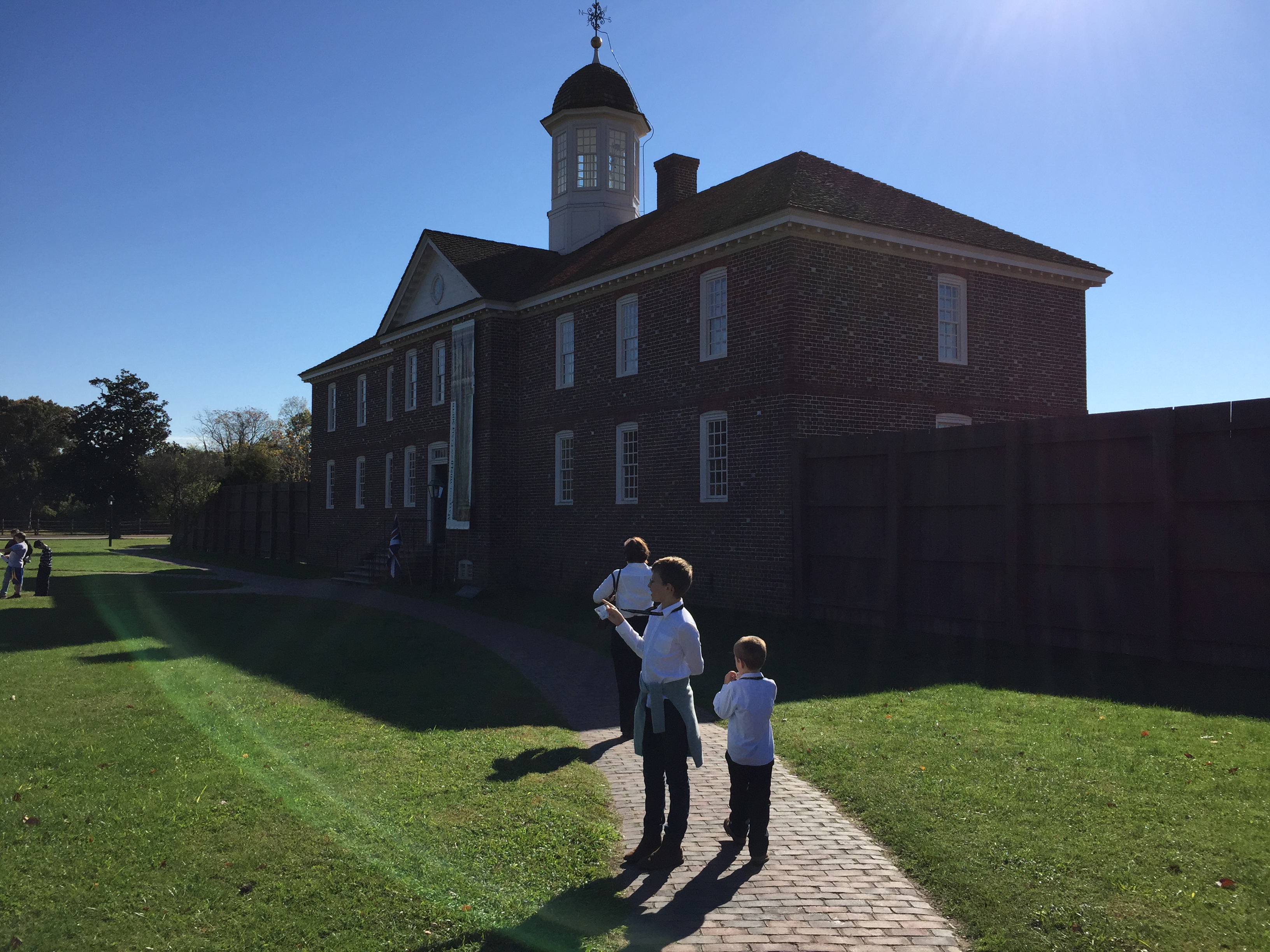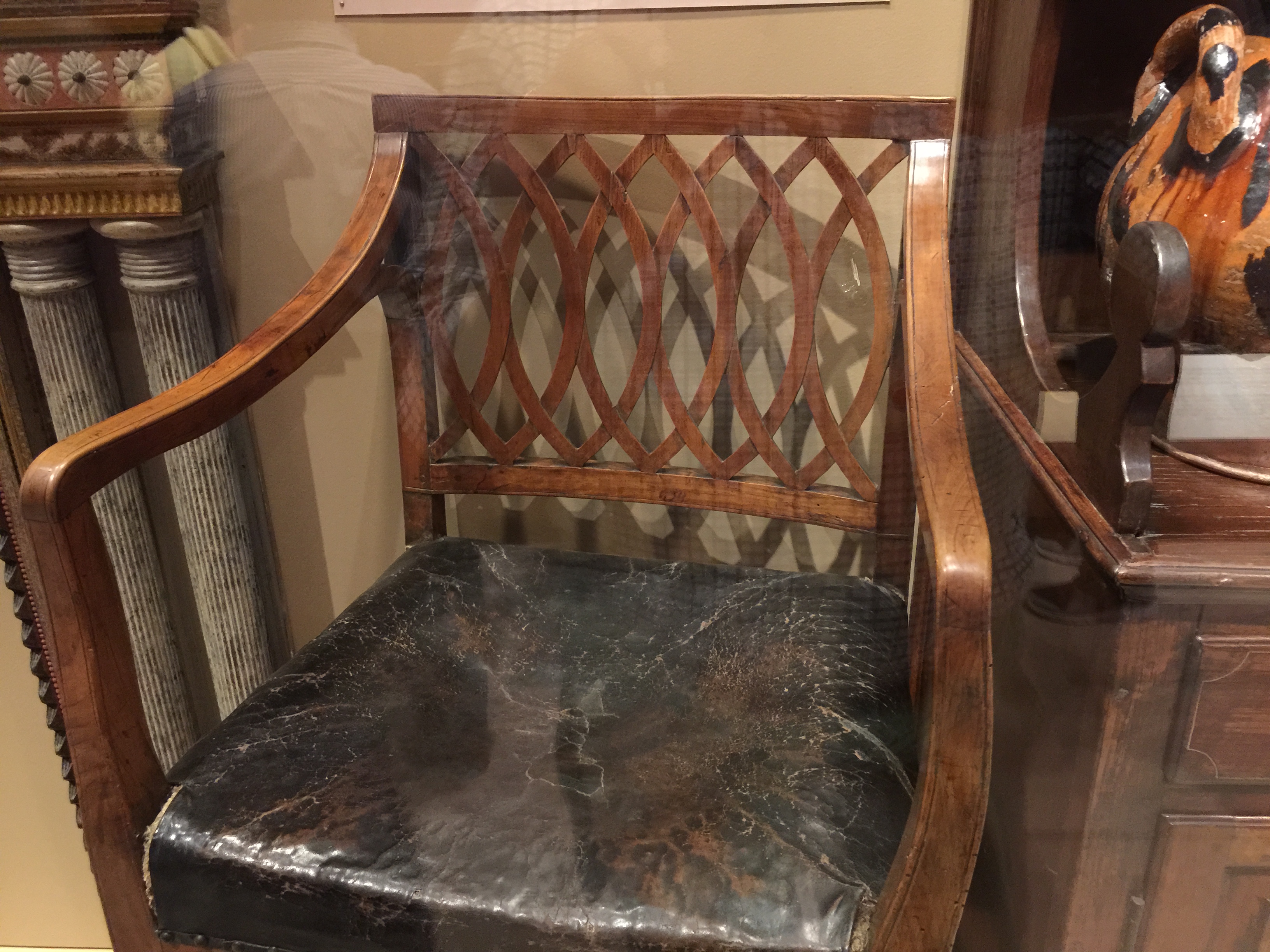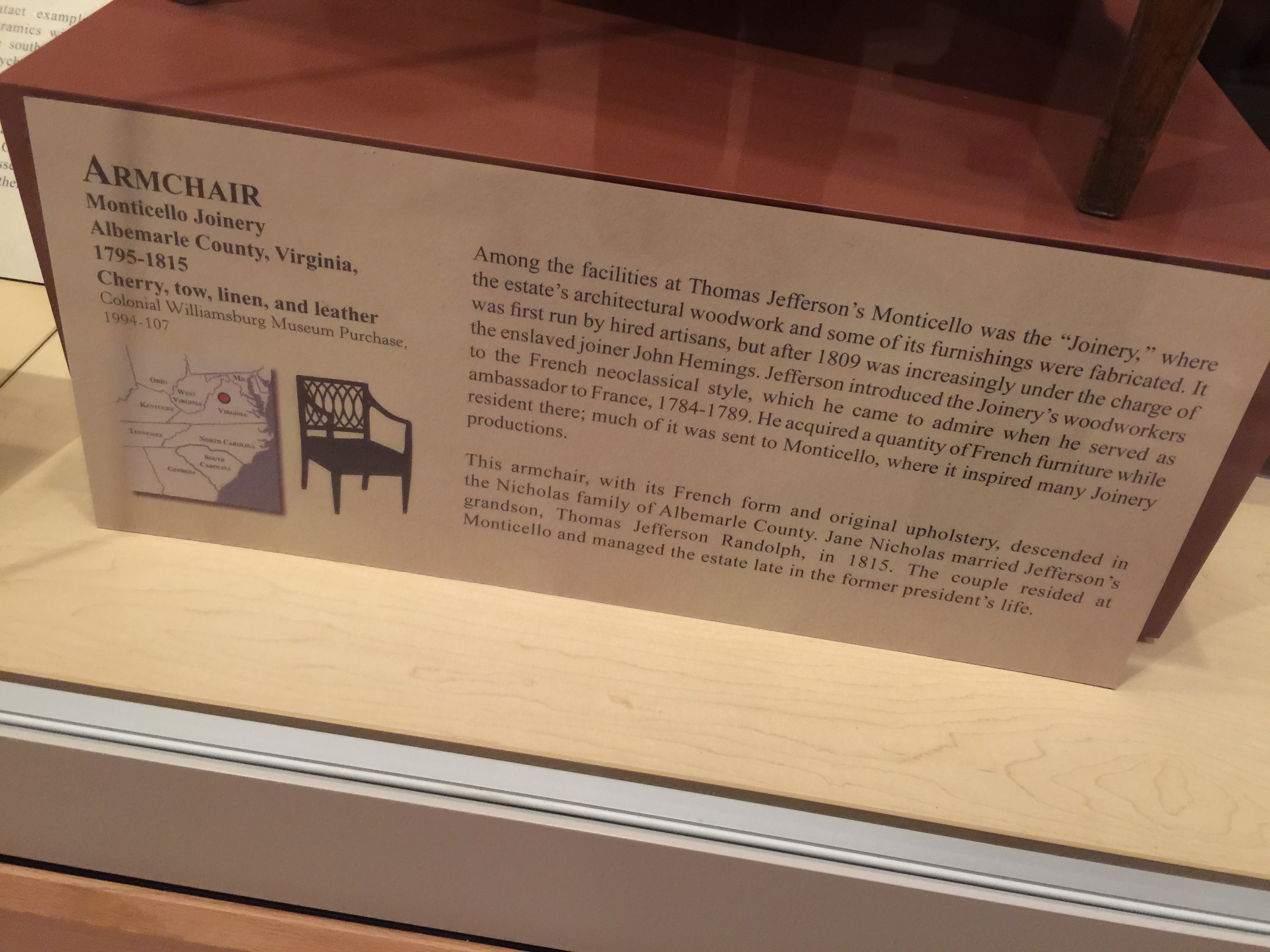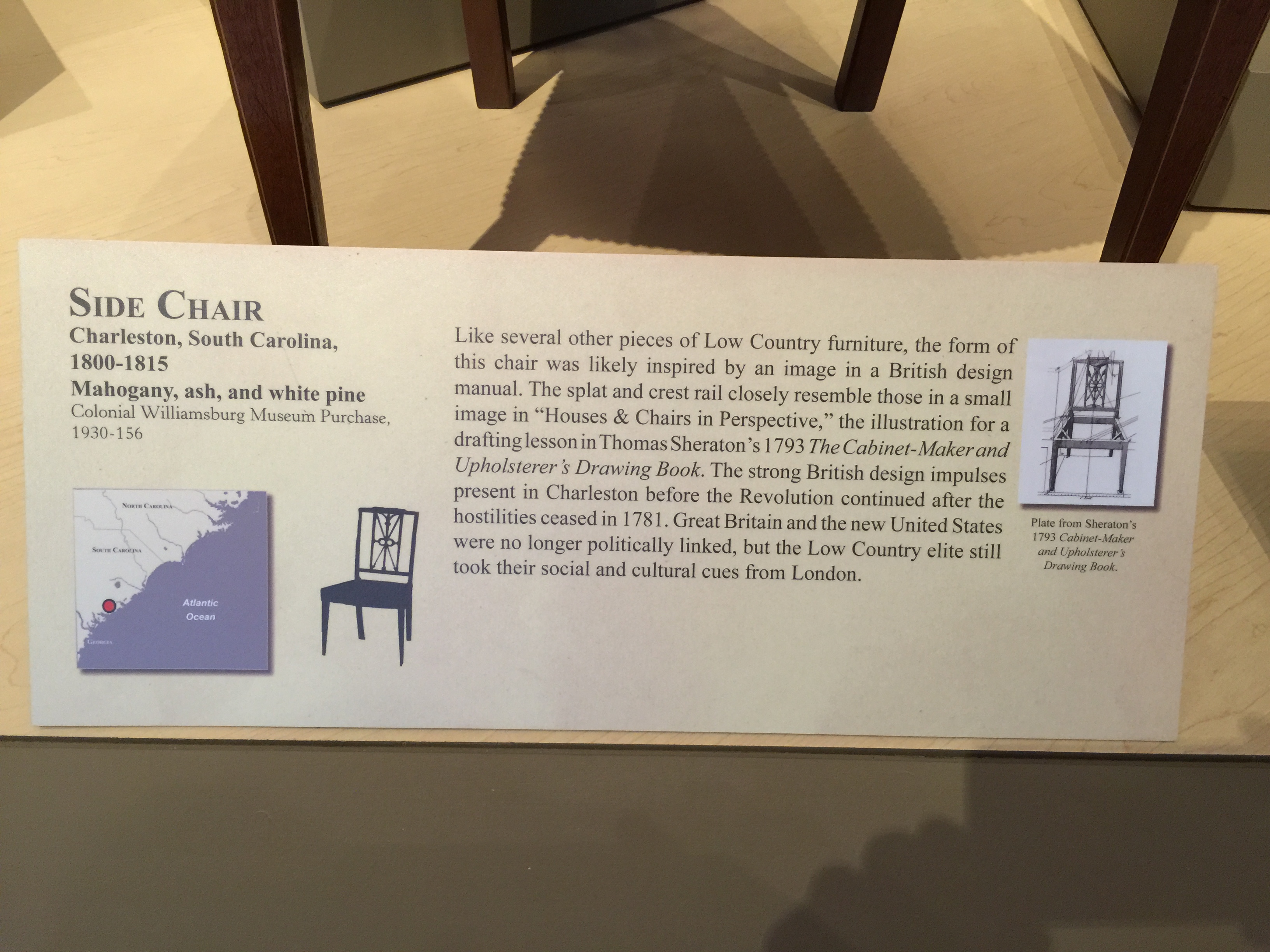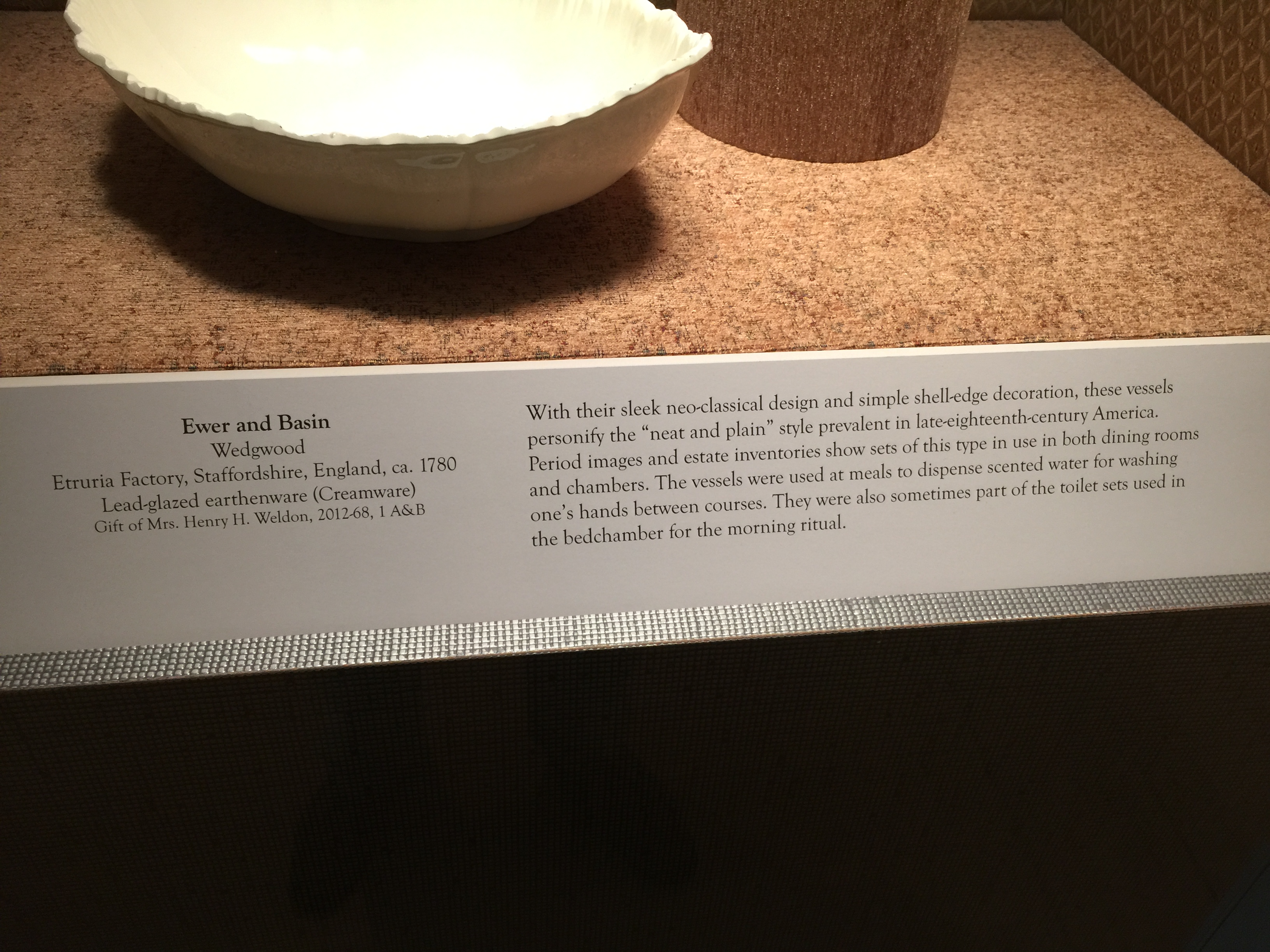The trip was drawing sadly to a close; we did not really want to leave Williamsburg, but we had one last important stop to make. The museum. It is filled with fantastic objects, and is educational in the extreme. Laid out in a very accessible, American way.
There is virtually every category of decorative and fine arts displayed within its walls. Paintings, engravings, silver, porcelain, pottery, furniture, firearms, everything. And and all of it Colonial American.
Maxime liked the guns, Gabriel liked the fire engine (horse drawn sort). Papa liked pretty much everything. Mama liked the costumes.
 *A beautiful Yongzheng bowl (1735), with superb drawing and colors.*
This chair from Monticello's carpenter! Jefferson was very proud of his carpenter. Did a stunning floor in the parlor there. The back splat on this chair is stunning. Jefferson's time as Ambassador made him passionate about French design; this chair no doubt is a reflection of that. There can be little question that Jefferson himself stood over Hemmings, his carpenter, and told him what he wanted with this chair. There is no way a design like this could be devised by anyone but Jefferson; it has no relation whatever to American designs of the period, and thus the carpenter would have nothing to "copy", or even strike a variant on.
Very Sheraton. BTW: Sheraton (England) never made a single stick of furniture in his life. He was a desiger, not a furniture maker. His genius was in the book he published, "The Cabinet Makers and Upholsters Drawing Book", 1791, with his original designs, which swept up both England and America in its peerleesly graceful, delicate forms.

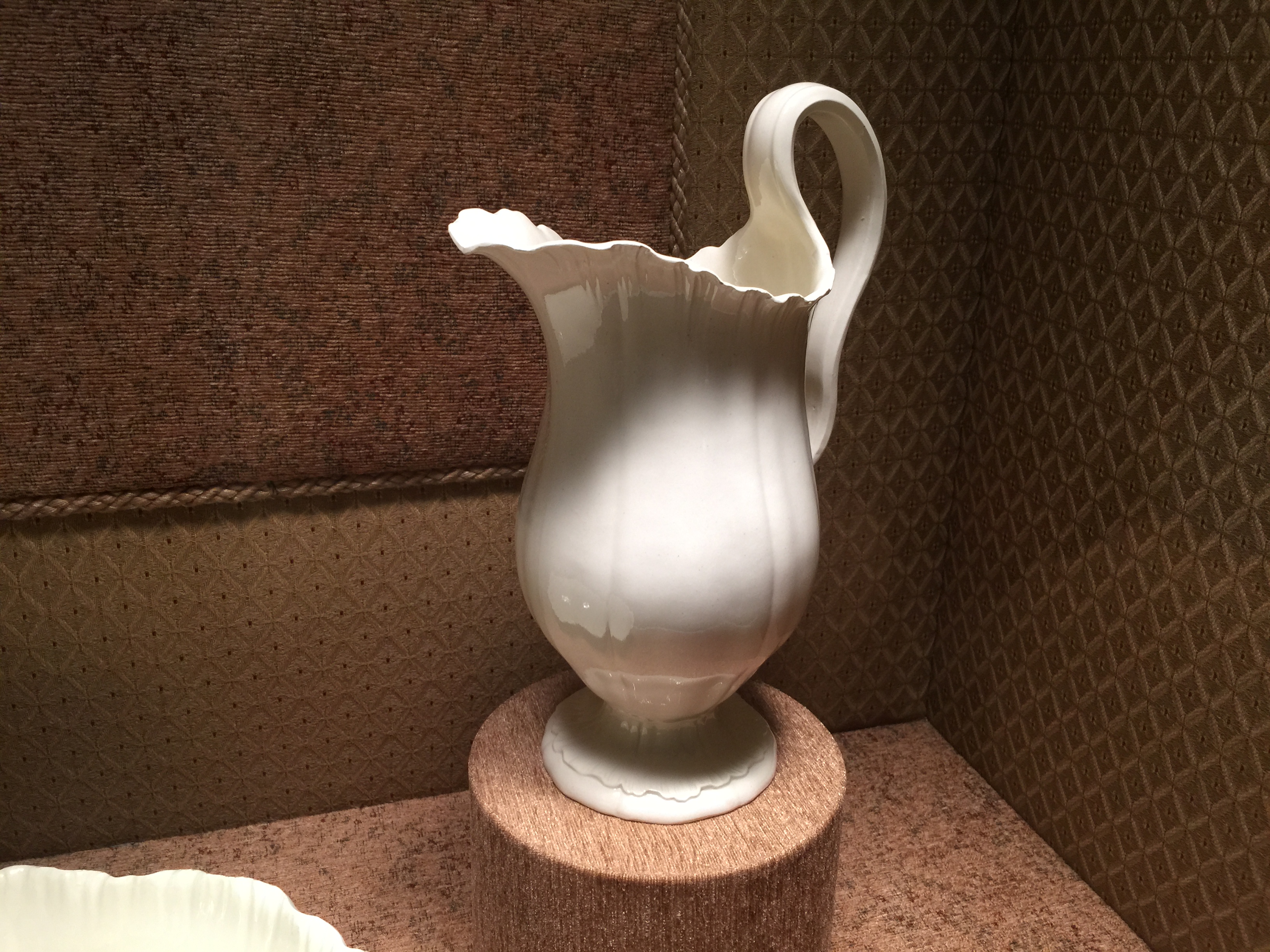 *Wedgwood had a titanic output. The firm of Wedgwood was a huge enterprise, which produced a prodigious variety of earthenware and porcelain, much of it invented (in form or substance or finish) by Josiah Wedgwood himself, a maniacal and tireless inventor and entrepeneur, if there ever was one. For decades, he delighted the English with innovation upon innovation, never resting on his laurels, and always coming up with something stunningly new, creative and beautiful. Think of Steve Jobs and Apple, and apply it to clay and the 18th century, and that's the gist of it. The creamware (photo) was his innovation, and was immensely popular. Looking at this ewer, one can see why. Not only is the color beautiful, but the shape is breathtaking. Perfect, really.*
